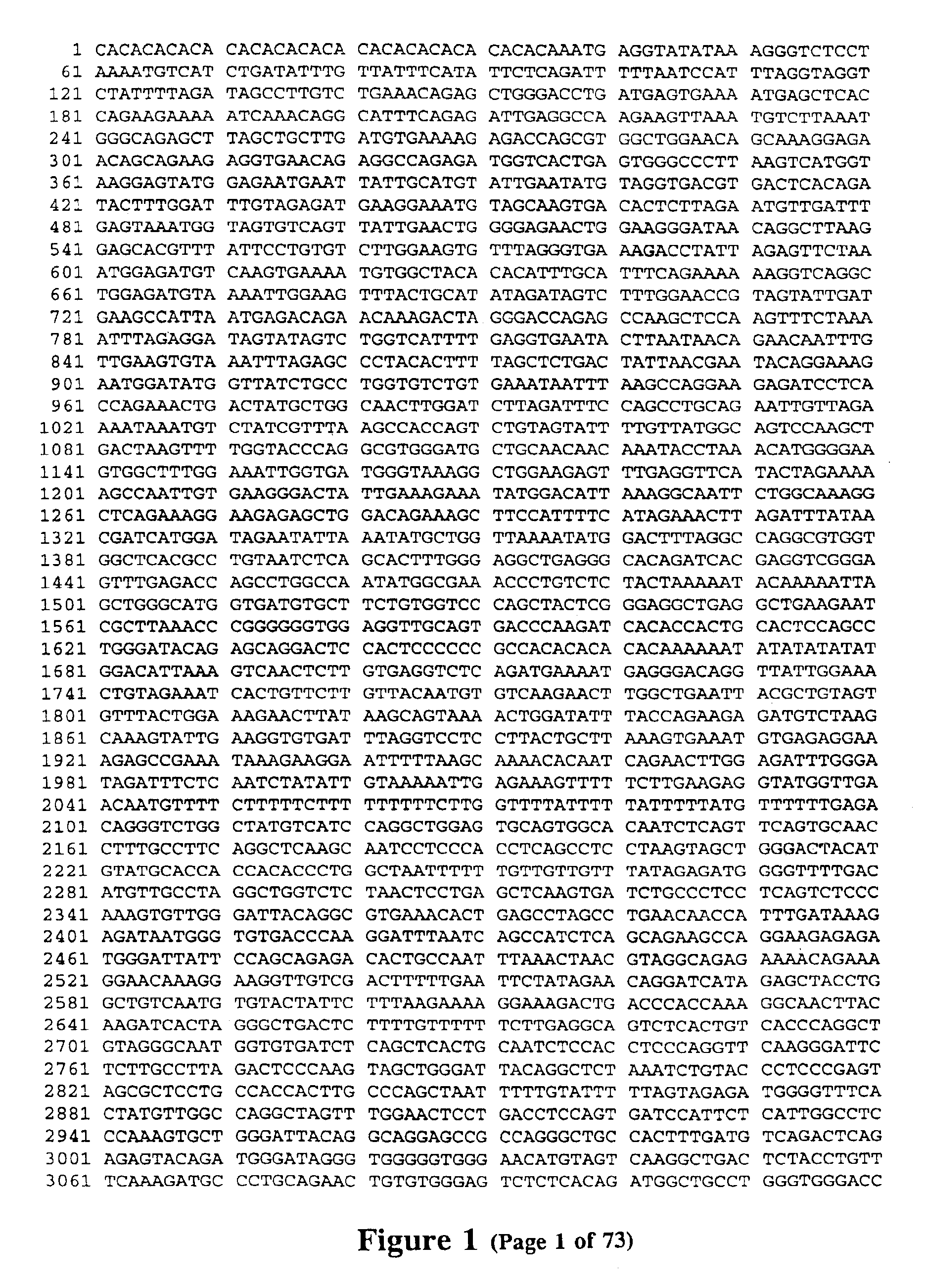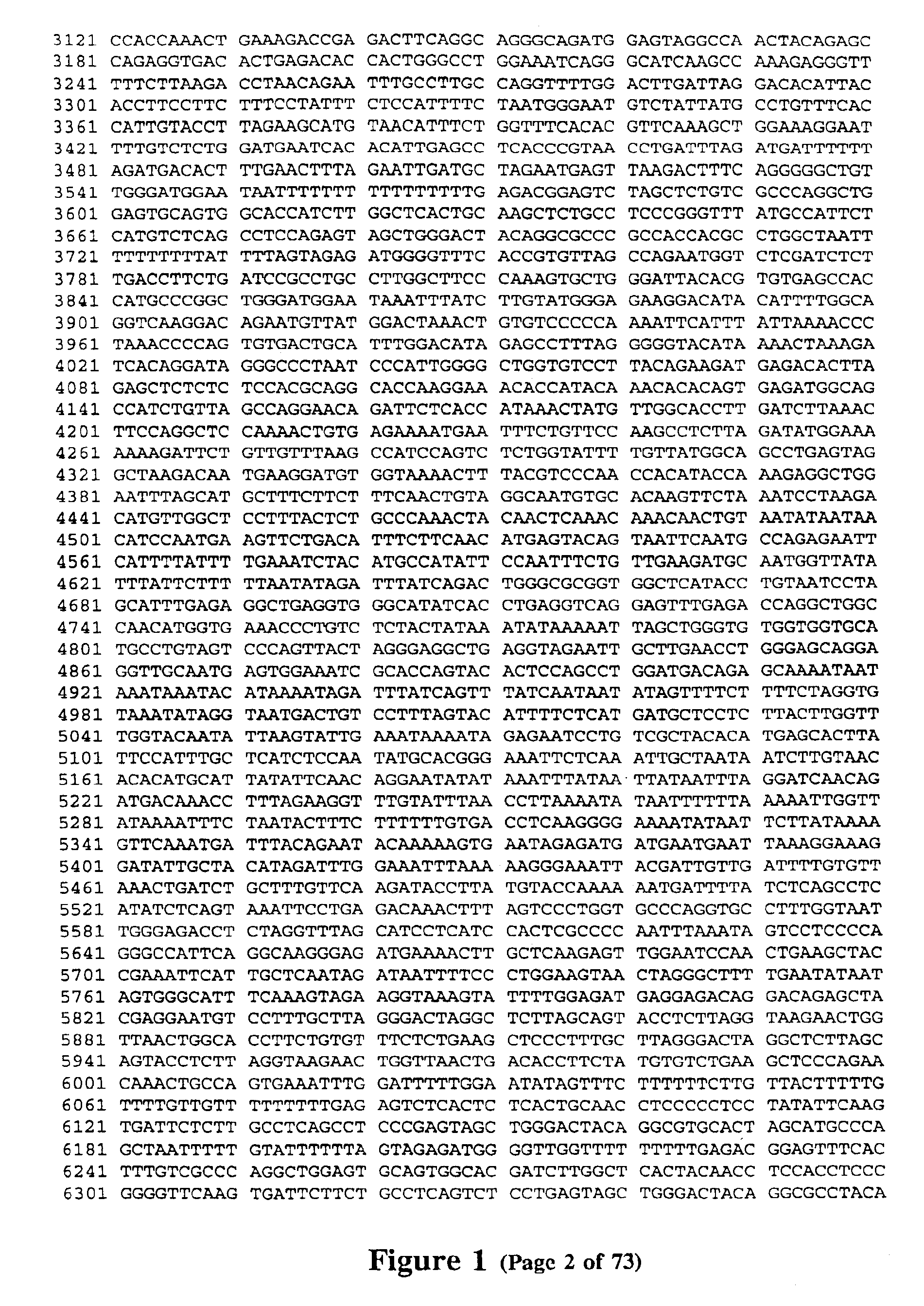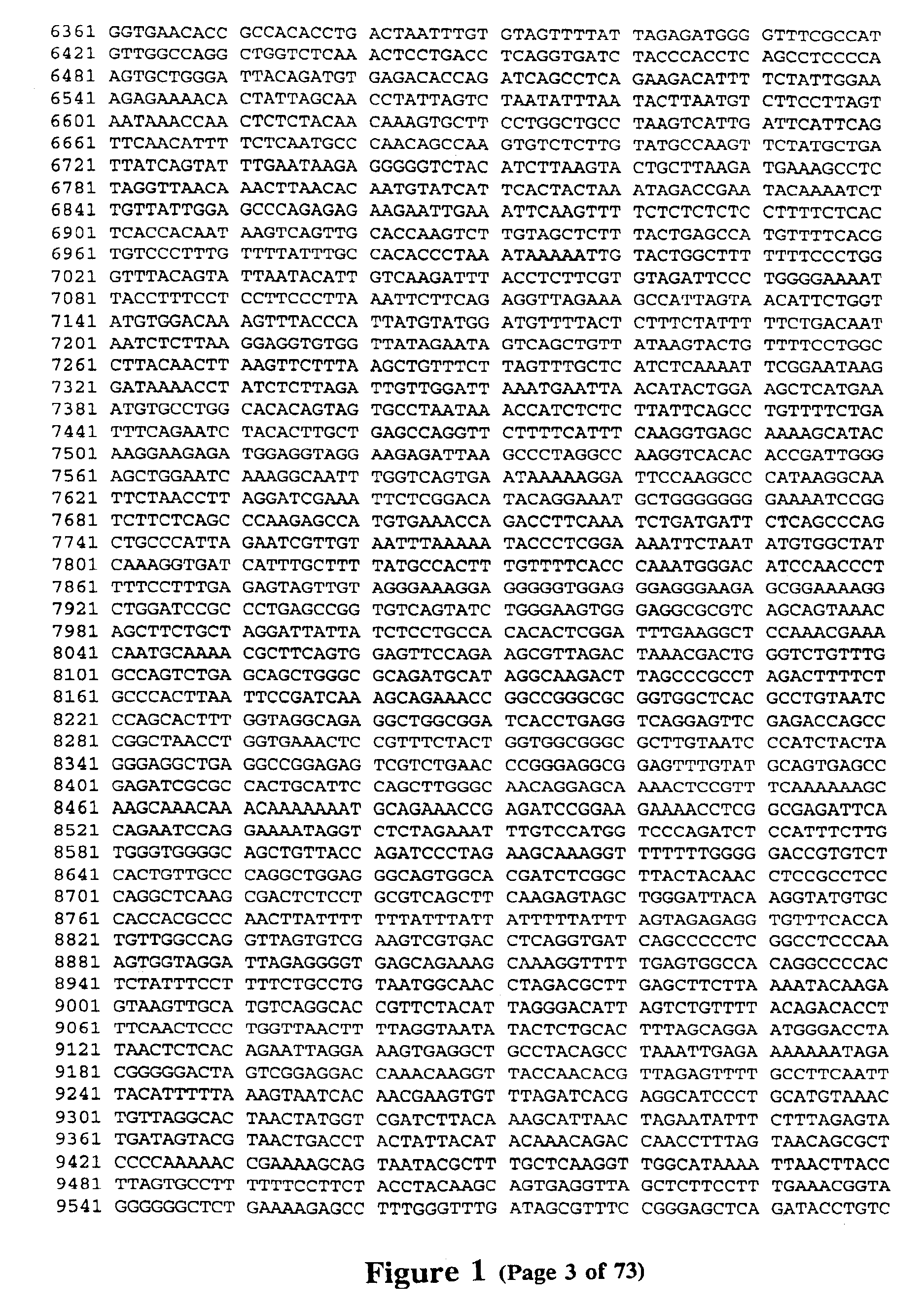Polymorphisms in the region of the human hemochromatosis gene
a technology of hemochromatosis and polymorphisms, which is applied in the field of polymorphisms in the region of the human hemochromatosis gene, can solve the problems of liver biopsy undetectable, inconvenient, and expensive, and achieves the effects of reducing the risk of mortality, reducing the number of patients, and improving the quality of li
- Summary
- Abstract
- Description
- Claims
- Application Information
AI Technical Summary
Benefits of technology
Problems solved by technology
Method used
Image
Examples
experimental examples
I. Sequencing of 235 KB from a Homozygous Ancestral (Affected) Individual
[0092]In these studies the entire genomic sequence was determined from an HH affected individual for a region corresponding to a 235,033 bp region surrounding the HH gene between the flanking markers D6S2238 and D6S2241. The sequence was derived from a human lymphoblastoid cell line, HC14, that is homozygous for the ancestral HH mutation and region. The sequence from the ancestral chromosome (FIG. 2) was compared to the sequence of the region in an unaffected individual disclosed in copending U.S. Ser. No. 08 / 724,394 (a portion of which is provided in FIG. 1) to identify polymorphic sites. A subset of the polymorphic alleles so defined were further studied to determine their frequency in a collection of random individuals.
[0093]The strategy and methodology for sequencing the genomic DNA for the affected individual was essentially as described in copending U.S. Ser. No. 08 / 724,394, her...
PUM
 Login to View More
Login to View More Abstract
Description
Claims
Application Information
 Login to View More
Login to View More - R&D
- Intellectual Property
- Life Sciences
- Materials
- Tech Scout
- Unparalleled Data Quality
- Higher Quality Content
- 60% Fewer Hallucinations
Browse by: Latest US Patents, China's latest patents, Technical Efficacy Thesaurus, Application Domain, Technology Topic, Popular Technical Reports.
© 2025 PatSnap. All rights reserved.Legal|Privacy policy|Modern Slavery Act Transparency Statement|Sitemap|About US| Contact US: help@patsnap.com



